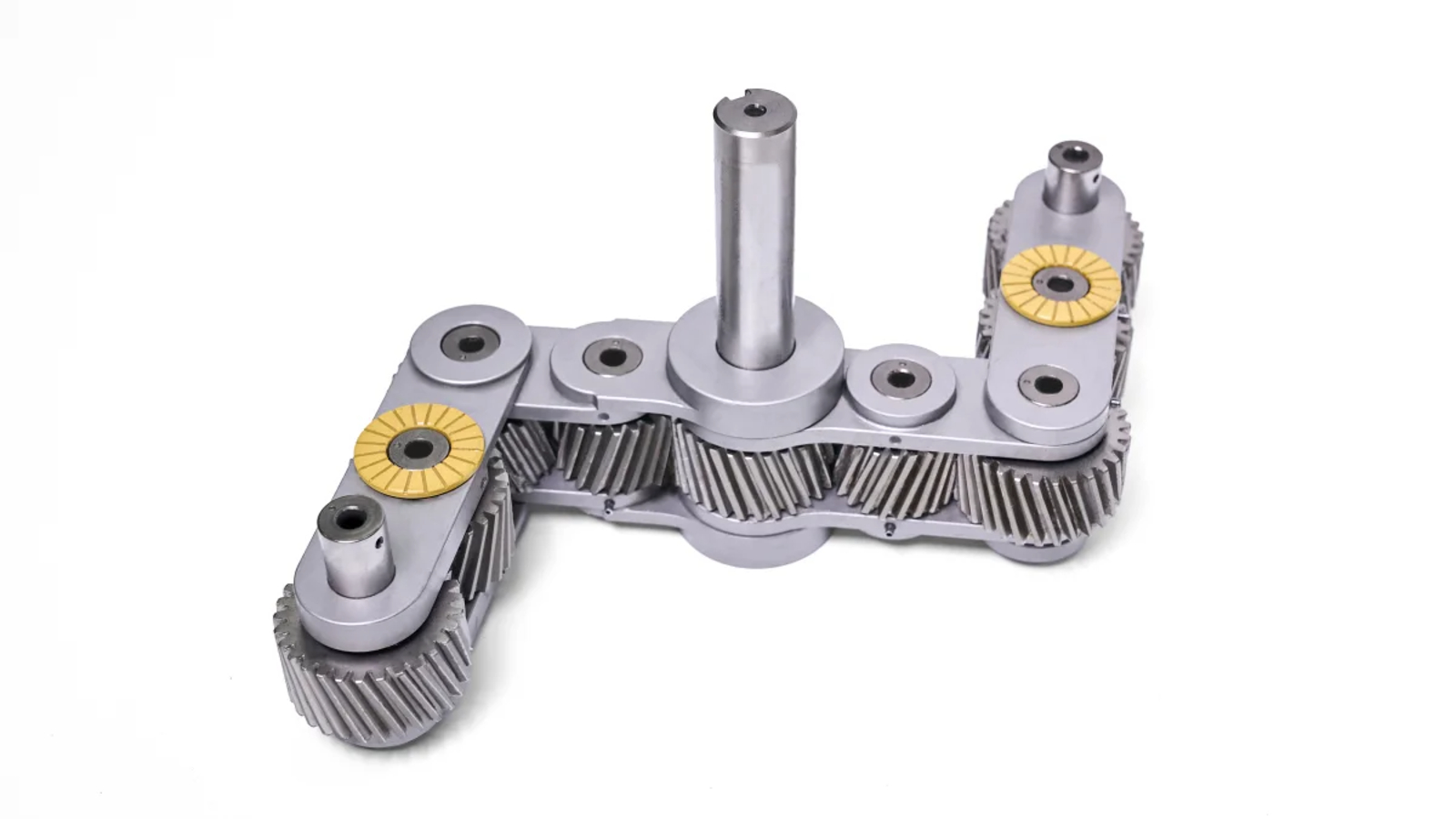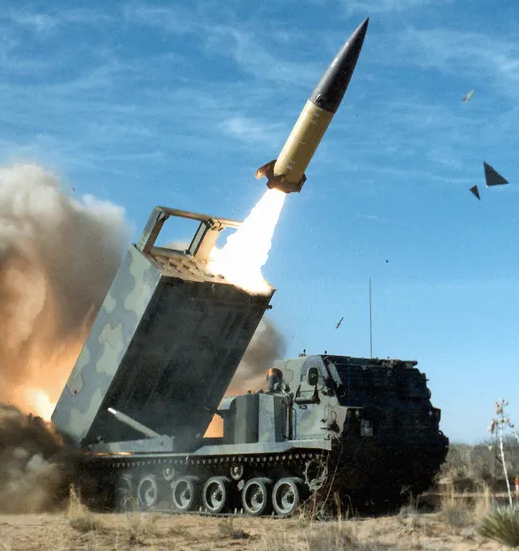There’s 2 significant inaccuracies in the article and 1 large oversight in the official video.
- Differentials are not one wheel drive. They can seem to drive only one wheel when spinning the wheels as one let’s loose and the other stays still, but it’s not driving one wheel. It’s still driving both. The problem is the free wheel is spinning at twice the speed indicated on the speedometer and the other is at 0. The driveshaft puts in a certain number of turns, the wheels, together, must add up to an equal output (multiplied by the gear ratio). If the car is going straight with full traction, then they turn the same. If you floor it in snow, one is probably spinning 40% over it’s share and the other 40% under. This is not unique to rwd either as fwd cars still very much have a functioning differential. To throw some numbers at it to help clarify the function, let’s say the engine is asking the wheels to spin at 30rpm each in a straight line. In a left turn, the right wheel travels further and needs to spin at 35rpm while the inner spins at 25rpm. It still adds up to 60rpm, same as a straight line. Mash it in the snow and it might be 60rpm in the left and 0nin the right or 0 in the left and 60 in the left. It could be 5/55, 40/20, or any other combo as long as it totals 60.
PS: differentials are irrelevant when the wheels aren’t connected to each other. Individual-motor wheels, as shown in the video, don’t need a diff. The non-drive wheels in a 2-wheel drive vehicle do not have a differential on the non-drive axle.
-
Cv joints are not specific to fwd as nearly all modern rwd cars with independent rear suspensions have CV joints. I don’t know of any trucks still using U-joints either since big trucks are solid axle. Cv joints function the same as U joints. The difference is C.V. joints output constant velocity whereas U-joints (what you’ll see often under trucks on the driveshaft, two square C shaft ends with an X link between) have lopey output that gets worse with greater deflection angle. If you own a u-joint bit for your socket wrench, I invite you to play with it. Instead of a solid pinned X between the U ends, CVs have free-rolling balls that can roll inboard and outboard to maintain the link between the shaft’s cup and the wheel’s cone.
-
The article is inaccurate but the video ignores this part, so I don’t fault The writer. The CV joints are said to be a poor design, yet, it ignores the part where the video reinstalls them at 4:20 and 5:10 for the front wheels. This mechanism does not allow angular deflection between the motor and hub, as it’s shown, without a CV joint. Lateral displacement, yes, but not angular - as in it can’t steer. This may be an overall improvement by reducing how often it needs to bend (only when steering), but it doesn’t eliminate it. And even then, the rear suspension is still designed to change camber as it changes ride height. Camber is the angle of the wheel as measured top to bottom, as in what you see from looking at the wheels from the front of the car. It keeps the wheels flat on the ground as you lean the car in a corner. You may see an overloaded car’s rear wheels look like /—\ as viewed from the rear or -–/ when hanging free on a lift.
Look, I’m not an engineer at Hyundai (or even a competitor) but this doesn’t quite pass the sniff test. Cool idea for sure, but it smells a little like marketing is clamoring for something edgy to display. Even as displayed, the motors and original reduces were already very compact and in close proximity to the wheels compared to a normal engine. The slightly reduced footprint of this uni wheel and slightly increased friction of a bunch of additional gears makes me think this is a fractional improvement in practice rather than a revolutionary improvement.
I’d be concerned with the amount of unsprung weight this adds, too. You’re basically taking the transmission and adding that mass to the hub. Seems like it would be pretty crashy on rough surfaces.
I considered that but couldn’t make any conclusions. The driveshaft and sun gear are not added to the unsprung. I’d guess only half the weight of planets and carriers is added. It definitely adds the weight of the ring gear to the unsprung mass.
I’m also curious how this affects rotational mass. So while every component spinning with the wheel from tire to motor shaft has rotational inertia, small-diameter components such as drive shafts have relatively little rotational inertia. Wheels and even brake discs have a lot more. I don’t have numbers obviously but I’m curious if the rotational mass of the ring gear ends up being detrimental compared to a heavier-weight lower-inertia cv setup.
I noticed they conveniently didn’t talk a lot about steering…
The claim of “one wheel drive” I think is meant to highlight what happens if traction is lost. It sounds like something I have heard on 4wd off-road forums. I agree the phrase “one wheel drive” is perhaps not a great way to explain the disadvantages of differentials vs limited slip differentials vs locking differentials vs individually driven wheels.
The idea of “one wheel drive” as I have seen it used, is that in a vehicle with one powered axle assembly (what we normally call 2wd-- either front or rear wheel drive) is that if you lose traction with either drive wheel, the vehicle no longer moves because all power is diverted to the slipping wheel.
If you have a limited slip differential, there is a limit to how much power is diverted to the slipping wheel. With a locking differential, you only stop moving if you lose traction to both drive wheels.
Anyway…
The design is really interesting.
You also bring up a good point about how camber changes with suspension position. Also the effective track width changes, such as with my 4Runner which has upper and lower control arms, a Double wishbone suspension. If the motor remains in a fixed position, the wheel will move onboard and outboard relative to the motor depending on suspension location.
I don’t quite get how these two effects are addressed with this new design. Or are the suggesting a different suspension technology that they didn’t discuss?
As for steering, I wonder if the design rotates the motor along with the wheel. In that case no CV is needed but I would guess there are some downsides to such a design.
I agree the video seems kind of… premature. The mechanism is cool but I don’t get the sense that its applications haven’t exactly been nailed down yet.
Individual motors on each wheel will still slip, just with half the power. So sure, it’s an improvement by an unrelated mechanism, but not having the wheels connected with a limited slip means it’ll still need a traction control system. And even still, the “half” power is a relative term because every car has a different output. That goes for not connecting left to right as much as it goes for front to back. So, not different than a traditional open diff or 2wd. There have been advances in brake-based traction control so they don’t just cut power and apply single brakes like the 00s, they can properly modulate pressure to get equal propulsion.
That’s a good point you’ve mentioned as well - the wheel will change distance to the motor as it goes through it’s motions. The only way to avoid that is to place the motor at the effective pivot point of the suspension which is, in a properly design suspension, inside the other wheel to mimic the level dynamics of a solid axle. That of course defeats the short halfshaft design direction. So something has to allow variation in distance. In the non-steer wheels, maybe this could be as simple as a telescoping spline drive. However, the video shows a small black joint at the same time stamps above on the rear and still has those normal-looking cv boots on the fronts.
Or maybe they’re ditching good handling and going with perfectly vertical suspension travel. Give it hard eco tires and it’ll slide before the suspension shows it’s flaws.
Seems really cool. I will definitely not buy the first model vehicle to use this, though.
Surprisingly easy to understand video for a complex concept.
It is made by Hyundai, I wouldn’t touch anything close to cutting edge they make.
I can already see this tech holding a yard sale on the freeway after a pothole.
After owning a Hyundai I won’t touch anything made by Ford or Chevy again. This car has had literally nothing wrong with it for over 70k miles. Except routine maintenance like brakes, oil changes, air filter and tires.
I worked in automotive for years. Hyundai/Kia fail spectacularly in ways no modern car should. Randomly catching fire to the point you are advised to not park inside, engines destroying themselves due to a manufacturing/design error they lied about, a faulty design in the transmission control unit that causes forward and reverse to invert should there be a short in the tail light, thousands of dollars in damage or engine loss due to a failure of a $0.50 motor that is not weatherproofed, among other things.
After the Theta II engines starting blowing up they came out with their 100k mile warranty. That is not a sign of confidence in their product, that is a confidence-man tactic.
What a badly written article, wrongly explaining both the diff and the CV joint. That’s not what they do or how they work.
Yeah, skimmed and saw one of his other articles praising the cybertruck and realized this likely wasn’t a source worth absorbing.
The explaination of how differentials work was painfully wrong. An I lost confidence in this author’s ability to explain the topic.
Ok. Care to elaborate, please?
Apparently I can watch that video every couple months and still be equally amazed by it.
Please remind me to watch this again in a few months, it’s super cool.Perfect
I knew exactly which video that would be. Such a perfectly clear explanation.
https://upload.wikimedia.org/wikipedia/commons/3/3e/Around_the_Corner_(1937)_24fps_selection.webm
Wiki to the rescue!
It’s a great video from 1937.How the automobile differential allows a vehicle to turn a corner while keeping the wheels from skidding. Reverse telecine & introduction edited out.
And the article has info as well https://en.m.wikipedia.org/wiki/Differential_(mechanical_device)
Modern cars have “traction control”, which detects when a wheel turns more than the other wheel. If it turns too much more, it will engage a “diff lock” and lock the differential which makes each wheel turn with the same power/speed/energy as if the differential was just a solid axle.
The long & the short of it is that a differential is only “1 wheel drive” when the differential “thinks” (it’s not smart) it should put all the power into 1 wheel - which is when the cars computer locks the differential.
Please forgive my laziness - https://chat.openai.com/share/45e326f5-1653-4c51-b057-b36326963559
Came here to say this.
The one thing they don’t really talk about is how it turns. The animations show vertical movement almost exclusively. At one point in the video there is a far shot showing a car turning and it looks like they actually swivel the entire motor to keep it perpendicular to the wheel which if true is going to pretty heavily limit it’s turning angle and radius.
The front wheels show CV-looking boots at 4:20 and 5:10. Even the rear wheels will likely need cv joints. Independent suspensions change camber with that coroner’s ride height to improve traction. That’s why when a car is overloaded, the wheels look like /—\ and when it’s on a lift, the wheels go -–/ (to varying degrees).
While there is some kind of boot shown the entire selling point of this thing was that it’s supposed to eliminate the need for CV joints. At that same 5:10 mark or there about you can also see the shot that appears to show the motors being pivoted to turn the wheel. I suspect these are not CV joints although they are joints most likely for camber adjustment as you point out, probably something like a universal joint.
A U-joint has worse modulation between input and output than a CV joint. However, I did look again at the video as big as I could and you are right, the motors are pivoting. It seems to only pivot a partial amount and still at an angle to the wheel. Something is still being glossed over.
Even if it was only useful at the rear, it would allow the battery to be moved further back and produce a better weight distribution. Most cars are front-heavy.
My guess is they will only put this on rear-wheel-drive cars. The system doesn’t look like it can rotate at all on that horizontal plane and moving the entire motor (that is sticking out of the back of the wheel) is basically a non-starter.
Edit, it may be possible to add another gear-set to enable rotation on the horizontal plane. But at that point I’m starting to wonder if the entire system is getting too complicated.
Like a CV joint? They kinda made a point in how great it was to get rid of the CV joint only to need to put it back in to get steering.
For the lazy people out there: https://www.youtube.com/watch?v=Nd6C0y8xc20
I cannot think of a car company I’d trust less to do this than Hyundai/Kia.
Somebody better tell them
Hyundai/Kia owners have, in large numbers, told Kia Group about quality issues their cars have. Their usual response is to gaslight everyone until some government agency sues.
No I mean someone better tell them to stop development on the uni wheel because you disapprove
Somebody had* better tell them
This is pretty cool!
But, in the video there is a quick flash of text that went away after 1s, 120km/h max speed?
From a mechanical standpoint, the new bearing saves a nearly negligible amount of space. Splitting the motor up and moving it to the notoriously wasted wheel well space is what clears up the center of the frame. Still very cool. It’s basically a single output differential, which is already quite compact. No need to split the rotation for turning since the wheels rotation will no longer be mechanically linked.
But eliminating the long half shaft that accompanies the CV joint is what allows that space to be used.
I mean you’re not wrong, but without separating the single motor to one at each wheel, you’d still have to translate the power from one point to each wheel. The uni bearing doesn’t provide that benefit. Separate motors DOES. And tuned and articulating short shafts are not a new thing. So even without this new bearing as long as you had separate motors for each wheel all you would have is a short CV shaft between the motor and the wheel. Hell why not save all of the space and just incorporate the motor into the hub??? Since BDC motors are more efficient when wider and smaller, it would be very easy to fit them within current day hubs.
I mean, don’t get me wrong, I honk for planetary gear designs every time. So I’m not knocking this design. It’s simple, machinable, and direct. It’s brilliant for what it is. It’s just not the space saver that they are touting it to be. The video literally showed two seats side by side with a bed in the back. Unless kia started making a suburban, I’m just not that naive.
Having these gears in the hub instead of a motor would decrease unsprung weight.
The gears are necessary to allow the wheel to move without having to move the input shaft.Edit: sorry, I misunderstood your comment. I agree.
Somehow I thought you’re saying the gears should be attached to the motor.
I didn’t think about that. Thanks for pointing it out.
It directly replaces the CV, so it’s the thing saving the space. Sure, if there was still only one motor, and a shaft connecting the two sides, less room would be available. But the space saving, and the reason why splitting the motor in two makes sense in the first place, is the uni wheel.
Also, yes, there are shorter CV joints, but they lose efficiency the shorter they are, because they need to translate through larger angles.
As to why putting the entire motor into the wheel isn’t a great idea for cars is because you want to keep as much weight of the vehicle on top of the suspension. If the motor is in the wheel, ride quality will suffer due to the increase of unsprung weight.
Ah, really good points. Thanks for the perspective. My expertise (if I may so generously call it that) ends at the manufacture and assembly processes. Thanks for the perspective.
Honestly, I get most of my knowledge from watching a bunch of youtube videos, so it’s not like you’re talking to an engineer or anything haha
But I do usually like to pick out the more technical videos, explaining the theory behind all this, so I guess I picked up on some things ^^
Article made it sound like only front wheel drive exists now and that only front wheel drive cars use CV joints lol.
Honestly I don’t care at this point, I won’t buy anything from Hyundai.
I haven’t been paying attention to Hyundai, what did they do?
Locally (Baltimore MD), in the city at least, there’s been a plague of car thefts for a while, specifically of Hyundai and Kia models. I forget the exact details, but there’s a software glitch that basically makes them child’s play to hotwire and roll off with.
Hello fellow Baltimorean!
so the pretty much only upside compared to hub motors is less weight in the wheels, and comared to conventional drivetrain layouts there’s added complexity and slight extra interior space? i mean innovation is key, but i don’t quite see the upsides as much as the hyundai engineers.
Probably useful in other applications. A universal joint is used in so many places other than cars
Setting aside all of the already observed questions in the comments already about mechanical viability, i.e. how this assemblage is supposed to steer. The elephant in the room is whether or not this is equivalently economical to produce compared to an axle with a CV joint in it, and/or if it will acceptably reliable for roadgoing vehicle use, what with having a shitload more moving parts in there.
The animation shows the geartrain assembly in an open faced housing, which if that’s how it’s ultimately designed is going to mean that there is now no way to keep the gears in a bath of oil or transmission fluid like is presently done in traditional transmissions and differentials. And yes, even in CV joints which are packed with grease inside their rubber sealing boots. I’ll let you in on a big automotive industry secret: There’s a reason current transmissions and other geartrain devices are kept suspended in oil all the time. A big one. One that has to do with your transmission not glowing red hot by the time you make it to your destination, or converting itself into glitter within the first mile.
Even setting aside lubrication concerns – Maybe the thing is chock-a-block full of sealed ballraces or something, for all I know – the big open slot they depict for the axle to move up and down in is just begging for a stone, a stick, a stray bolt, or any other show-stopping piece of debris from getting in there and causing you to have a very expensive day. Ditto with the gap around the edge of the sun gear, which is going to need a bitchin’ huge mechanical seal on it at the minimum. If the solution is perhaps to put some kind of rubber boot over the opening that moves with the axle, it’s going to have to be ridiculously flexible and remain so even throughout all kinds of temperatures and operating environments. Cars, you know, being devices quite infamous for being operated outdoors in the weather and all.
I mean, I can’t imagine Hyundai’s engineers haven’t thought of this. But I wonder if this is one of those works-in-the-lab-and-test-track things, and they’re expecting someone else to figure out the viability challenges.
I guess this design would require a few seals to keep the mechanism bathed in oil and keep foreign contaminants out.
Is there enough oil volume to keep the mechanism cool at highway speeds?
And how do those tiny gears hold up to the loading? They seem a lot smaller than an equivalent pinion gear in a solid axle, for example And they were rather vague on their stress testing. Seemed like a bit like hand waving and “trust us bro”.
There needs to be more music in the background, and the narrator needs to speak with more enthusiasm about more needless details of how smaller makes it possible to use the space for something else. /s
The concept is cool though.
I was just learning about CVJ gearing the other day and was thinking cars should use it instead of fixed gear ratios. Very cool.
It’s still a fixed ratio though?
Oh I was looking at constant velocity transmissions. Similar concept to the uniwheel, as far as the gearing. As least, if I understand it correctly.
When transmissions are discussed, the acronym CV stands for continuously variable. (As opposed to a transmission with 3-5 discrete gear ratios.) But yes, some CVT designs do use planetary gears, especially for hybrid gas-electric models.
CVJ = constant velocity joint
CVT = continuously variable transmission
Thank you for squaring me away, here.












